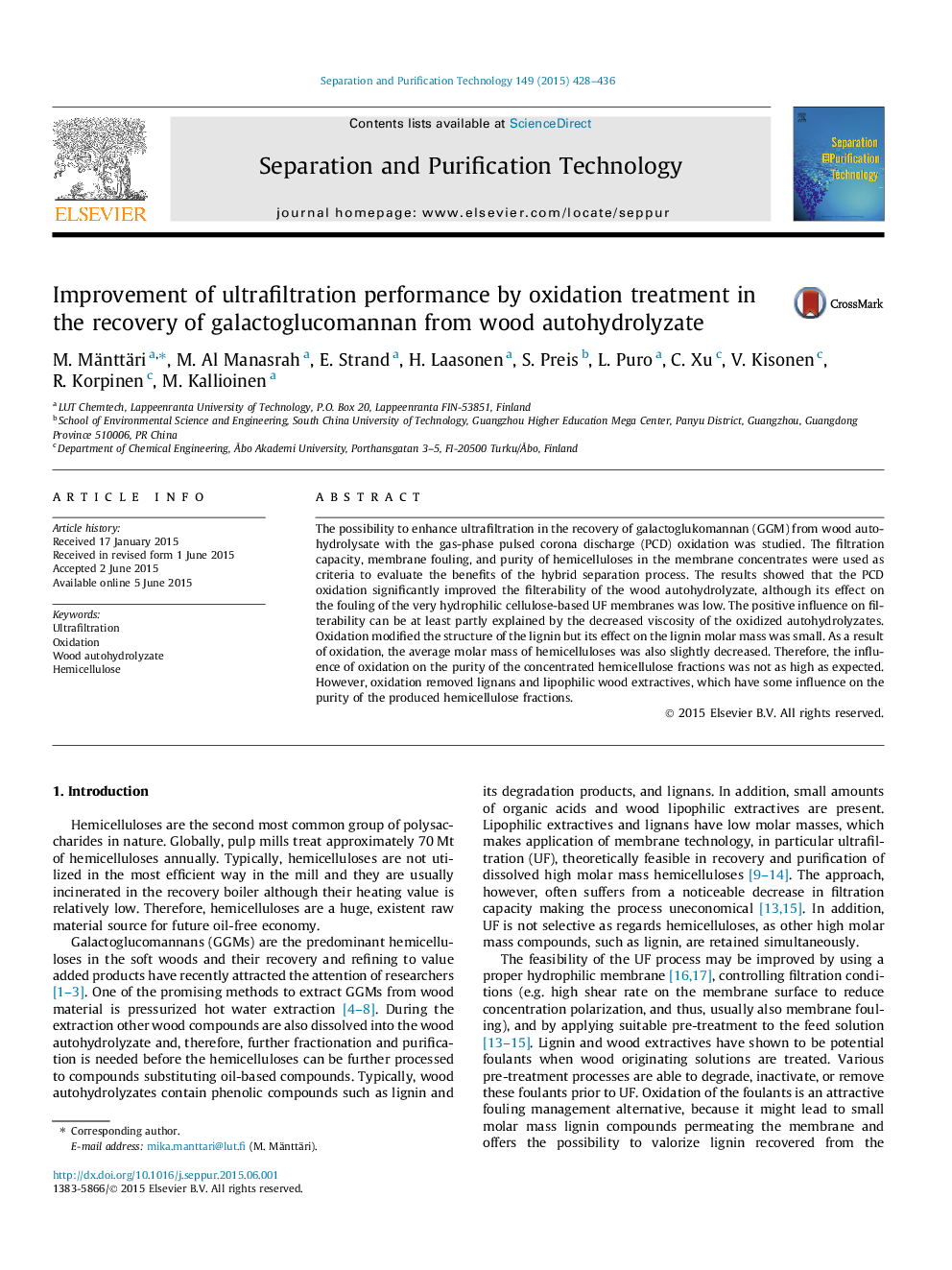| Article ID | Journal | Published Year | Pages | File Type |
|---|---|---|---|---|
| 640606 | Separation and Purification Technology | 2015 | 9 Pages |
•Oxidized wood autohydrolyzate showed a significantly better flux in ultrafiltration.•The increased flux is partly due to the reduced viscosity of the wood autohydrolyzate.•The oxidation almost completely removed the wood lipophilic extractives and lignans.•The oxidation did not have any significant effect on the hemicellulose–lignin ratio.
The possibility to enhance ultrafiltration in the recovery of galactoglukomannan (GGM) from wood autohydrolysate with the gas-phase pulsed corona discharge (PCD) oxidation was studied. The filtration capacity, membrane fouling, and purity of hemicelluloses in the membrane concentrates were used as criteria to evaluate the benefits of the hybrid separation process. The results showed that the PCD oxidation significantly improved the filterability of the wood autohydrolyzate, although its effect on the fouling of the very hydrophilic cellulose-based UF membranes was low. The positive influence on filterability can be at least partly explained by the decreased viscosity of the oxidized autohydrolyzates. Oxidation modified the structure of the lignin but its effect on the lignin molar mass was small. As a result of oxidation, the average molar mass of hemicelluloses was also slightly decreased. Therefore, the influence of oxidation on the purity of the concentrated hemicellulose fractions was not as high as expected. However, oxidation removed lignans and lipophilic wood extractives, which have some influence on the purity of the produced hemicellulose fractions.
